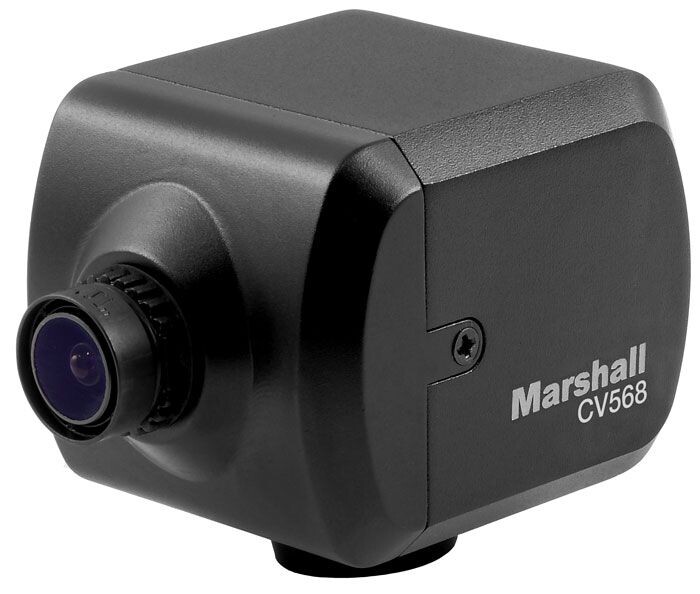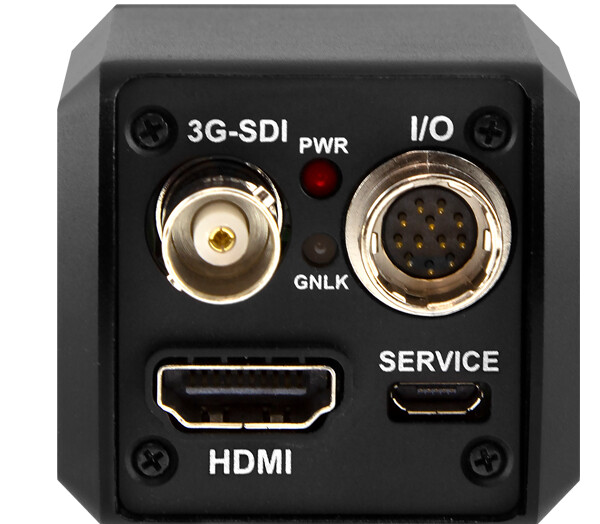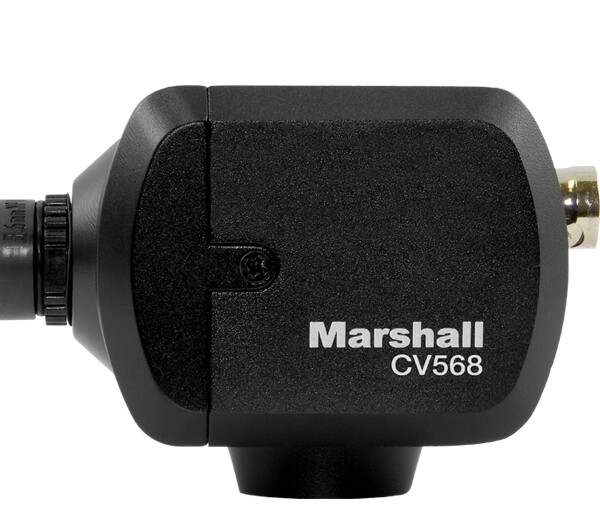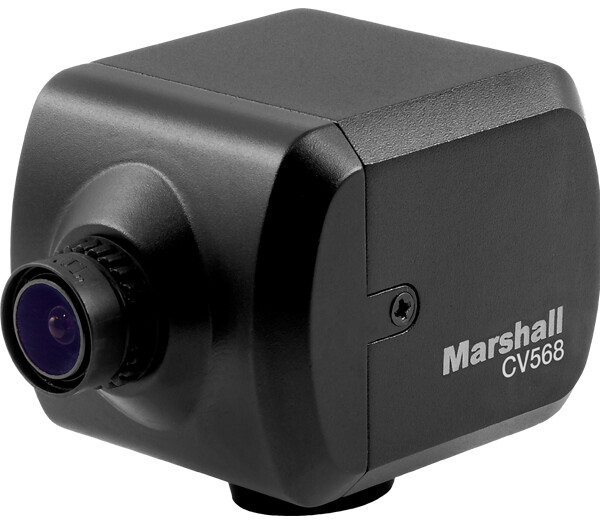



























£780.00*
- Camera resolution 3.2 MP
- Frames per Second 60 fps


Frequently purchased together
Product information
Full HD mini camera with global shutter sensor and genlock
With the CV568, you can output videos via 3G-SDI and HDMI. Thanks to the global shutter sensor, recordings with fast movements are displayed even more precisely. The genlock allows you to synchronise multiple cameras with frame accuracy. The supplied 4.4mm lens can be changed if required.
Experience the following highlights:
- Sony global shutter sensor guarantees precise display of fast movements
- Tri-level synchronisation enables seamless transitions between multiple cameras
- 3.2 megapixels with 25% larger pixel size
- Simultaneous 3GSDI and HDMI outputs
New global shutter CMOS technology
Global shutter camera sensors are nothing new to the broadcast ProAV industry, but when users are asked to capture ultra-fast motion within the field of view, motion anomalies become more of a challenge - Sony global shutter sensors perform better in these conditions and all pixels are exposed simultaneously (from start to finish).
Genlock tri-level sync function
Tri-level synchronisation allows multiple cameras to be plugged into HD workflows already in sync (genlock), enabling seamless transitions between cameras with minimal delay. Tri-Level runs at a higher frequency, making HD60 signal synchronisation more accurate and seamless.

25% larger pixel size
Larger physical pixel sizes enable greater colour accuracy and clarity, even in low-light applications. The CV568 uses a Sony Exmor 1/1.8" sensor with larger physical pixels to deliver broadcast-quality images with a miniature camera size.

Durable, flexible, powerful
Marshall miniature cameras are cut from individual blocks of aluminium alloy and equipped with rear I/O port protection, a solid 1/4-inch 20 mount and flexible interchangeable lenses. The ability to remotely adjust a POV camera from a control room and adjust hundreds or thousands of feet away is a powerful tool and comes standard with every Marshall camera.

Technical data
| Name | Marshall Electronics CV568 mini camera with Full HD & Sony global shutter sensors for recording fast movements |
|---|---|
| Article number | 1000026967 |
| GTIN/EAN | 0801813194135 |
| Manufacturer SKU | MACV568 |
| Model name | CV568 |
| variant | Camera |
| Brand | Marshall Electronics |
| Product Type | Camera |
| Application | Single-Site , Small rooms |
| Resolution | 1920 x 1080 Full HD |
| Frames per Second | 60 fps |
| Camera resolution | 3.2 MP |
| Camera sensor | Sony 1/1.8” Exmor Global Sensor |
| Field of view | 84° |
| Inputs | 1x HDMI , 1x USB-C |
| Product width | 4.4 cm |
| Product height | 4.7 cm |
| Product depth | 5.6 cm |
| Weight | 0.115 kg |
| Colour | Black |
| Condition | New |
| Warranty | 24 Month |
| Warranty type | Bringin service Service and support information |
Product safety
| Person responsible for the EU |
|---|
| Marschall Electronics GmbH & Co. KG |
| Kreuzackerstrasse 2 |
| 82467 Garmisch-Partenkirchen |
| Germany |
| info@me-team.net |




